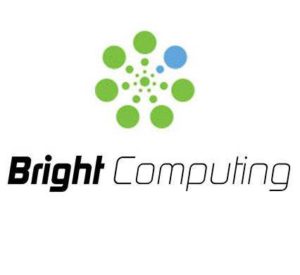 Today, Bright Computing announced that Simula Research Laboratory has chosen Bright Cluster Manager to manage its multi-architecture, multi-OS HPC environment.
Today, Bright Computing announced that Simula Research Laboratory has chosen Bright Cluster Manager to manage its multi-architecture, multi-OS HPC environment.
Simula Research Laboratory AS was established in 2001 and is organized as a limited company owned by the Norwegian Ministry of Education and Research. Its main objective is to create knowledge about fundamental scientific challenges that are of genuine value for society. After an initial planning phase, Simula Research Laboratory established eX³ in 2019 to become the previously missing national resource for research on exascale computing in Norway.
The eX³ infrastructure allows Norwegian HPC researchers and their international collaborators to explore bleeding-edge hardware and software that will be instrumental to the coming generation of supercomputers. In particular, this ambition calls for a unique system offering extreme heterogeneity at all technology levels,” says Simula’s Research Director for Software Engineering and HPC, Professor Are Magnus Bruaset.
The eX³ infrastructure is funded for five years through the RCN program for national research infrastructures. In addition to the host institution Simula, the project consortium also includes the national HPC management body Sigma2, HPC research groups from the University of Tromsø, NTNU, and the University of Bergen, as well as the HPC technology providers Graphcore, Dolphin Interconnect Solutions, and Numascale.
For such a high profile and important project, a fully supported cluster manager was essential, and Simula found Bright to be the only vendor to provide cluster manager software that can support a heterogeneous computer architecture.
After a careful evaluation of various cluster management solutions and based on a positive prior experience with Bright Computing, Simula chose Bright Cluster Manager to provide comprehensive management of eX³, enabling the organization to administer its HPC platform as a single entity; provisioning the hardware, operating systems, and workload managers from a unified interface. Further, the intuitive Bright management console will allow Simula to see and respond to what’s happening in their cluster anywhere, at any time.
Simula currently has three major compute architectures (Xeon, Epyc and Arm), 2 GPU types (Volta and Vega-20), a DGX-2 from NVIDIA, and a Graphcore IPU system. On the network side, it has two topologies of 200Gbps Mellanox HDR, one topology of PCI Express networking (DIS), in addition to 25Gbps provisioning ethernet and 1Gbps management networks. Finally, it will share 500TB of enterprise-level hybrid storage (E5760) from NetApp using ThinkParQ’s BeeGFS.
Bright sits at the heart of the installation, helping Simula to get new software deployed quickly and providing a complete management view of―and control over―the six racks currently installed. The platform is highly dynamic and will grow by 16 more nodes next month, four of which are top bin Huawei Kunpeng 920 nodes and 12 of which are IO nodes AMD Epyc “Rome”; all with PCIe Gen4. Bright will take care of the deployment of these additional resources, making any future transitions and upgrades a seamless and pain-free experience.
Terry Rush, Sales Director at Bright Computing, commented, “Simula is paving the way for Norwegian research by building this state of the art HPC platform. In choosing Bright Cluster Manager to overarch this cutting-edge facility, Simula will be able to get the cluster up and running quickly and keep it running reliably throughout its lifecycle.”
Tore Heide Larsen, Senior Research Engineer at Simula, added, “The two main reasons that we chose Bright Cluster Manager were for its heterogeneity and the speed which it can deploy and manage software. Bright will allow me to nimbly reconfigure and provision new topologies on the fly, supporting the dynamic nature of our high-performance research projects.”
Looking to the future, Simula will build on its solid foundations in high performance computing to address emerging technologies designed specifically for machine learning and artificial intelligence and Bright Computing will be there for all the cluster automation and management needs.




